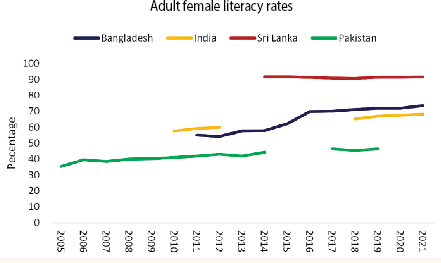THE people of Badin have expressed their reservation about expansion of LBOD drainage capacity, fearing another catastrophe in their area as witnessed in the recent past.
They see huge risks specially for those living along KadhanPateji Outfall Drain (KPOD), Tidal Link Canal and coastal belt, due to breaches and overtopping of water during monsoon. They believe that Badin being disaster prone district might face calamity and destruction similar to floods in 1995, cyclones in 1999, 2007 and floods again in 2011.
They know that they have suffered badly due to construction of LBOD. The horrible memories of these disasters have built fear and distress in their minds. Let us have a look whether LBOD is a problem or cure for drainage problem of Sindh.
Agricultural production in Sindh would be very difficult to sustain without presence of a sound drainage network. Keeping in view the importance of agricultural and run off drainage for crop production, the construction of LBOD was initiated in 1960’s and completed in 1990’s.
It was constructed to drain water from more than two million hectares of land of ShaheedBenazirabad, Sanghar, Mirpurkhas and Badin districts into the Arabian Sea. The effluent of LBOD (spinal drain) disseminates into DhoroPuran Outfall Drain (DPOD) with capacity of 2000 cusec and KPOD having capacity of 2600 cusec. The DPOD empties into Shakoor Lake (a shallow saline lake of an area about 150 sq. km stretched into Pakistan and India), whereas effluent of KPDO is directly discharged into sea through 41 km long Tidal Link Canal.
During monsoon 2011 more than 20 MAF rain water was drained from vast areas of ShaheedBenazirabad, Sanghar, Mirpurkhas and Badin districts through LBOD, which otherwise might have not been possible and these areas might have been completely drowned.
Unfortunately due to lack of operation and maintenance of LBOD, the drainage from ShaheedBenazirabad and Sanghar districts caused havoc at the tail end districts i.e. MirpurKhas and Badin due to breaches and overtopping of banks. Low discharge capacity of LBOD, weed growth, silting, small and weak banks due to holes created by burrowing animals and faulty design of Tidal Link Canal are usually considered main causes for the destruction at tail end of LBOD.
The water flow capacity of Left Bank Outfall Drain (LBOD) has increased from 4600 cusec to 9000 cusecs to mitigate the havoc due to extraordinary monsoons (similar to 2011) by timely drainage of runoff. The capacity has increased through de-silting of bed of drain, raising banks up to two ft., repairing damaged hydraulic structures and by clearing vegetative growth.
The project director of LBOD has claimed that 90 per cent of the repair and re-sectioning of LBOD has already been completed in the first phase.
He is hopeful that discharge capacity shall further be enhanced to 13000 cusecs in next development phases of LBOD.
Due to enhanced benefit of LBOD in the drainage of agricultural lands, it is said to be highly beneficial for ShaheedBenazirabad andSanghar districts while it is said to be responsible for drowning the Mirpurkhas and Badin districts.
For making LBOD an efficient, environmental friendly and fruitful for all districts, following suggestions may be considered:
The capacity of LOBOD be further expanded to 13000 cusecs so as it can withstand and discharge runoff of torrential monsoon rainfall safely into sea.
The banks and bed of LBOD, if possible, should be lined. This shall not only minimise the risk of breaches but shall also minimise infiltration of water laden with poisonous chemicals into soil and groundwater.
To avoid or minimise tidal flow into Tidal Link Canal and KPOD, a wear or regulator should be erected so as to mitigate the resulting impacts of back flow of effluent on the group of natural coastal lakes and agricultural land.
Like irrigation network, drainage network should also be continuously operated, maintained and repaired.
The untreated water should not be allowed into LBOD system. Only treated water should be disposed into Arabian Sea so that it does not pose any environmental issue.
Encroachment by influentials on small natural drains in MirpurKhas and Badin districts should be removed and linked to spinal drain.
Groundwater quality of coastal belt should be continuously monitored in order to assess and keep watch on the seawater intrusion.
Scientific study should be carried out on the mitigation of impacts of soil salinisation. The land reclamation programme for coastal soils should be initiated.
A broad study on degradation of environment and ecosystem of internationally recognised wetlands (Ramsar lakes), flora and fauna caused by Tidal Link canal should be carried out and resulting damaged should be redressed.
Mangroves should be planted along the costal belt in order to minimise erosion along tidal creeks, provide feed and natural habitat to fish stocks and to minimise environmental degradation due to sea water intrusion.
A comprehensive strategy should be prepared for protection, promotion and restoration of livelihood sources such as agriculture land, livestock, fisheries, grazing areas and forests for the people of Badin.

































